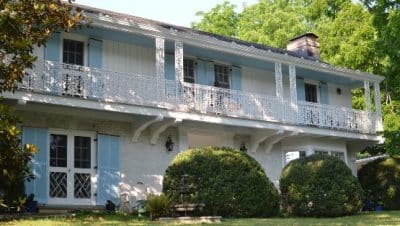
Experts from the Maryland Department of Natural Resources and Virginia Institute of Marine Science concluded that hypoxic conditions in the Chesapeake Bay are better than average in 2022.
The Bay has a smaller than average dead zone this year, shortened by cool temperatures and strong winds, according to a press release. A dead zone is an area of low oxygen that forms in deep Bay waters when excess nutrients, such as nitrogen and phosphorus, enter the water through polluted runoff and feed naturally-occurring algae. As a result, algae blooms grow, then eventually die, decompose and remove oxygen from the surrounding waters faster than it can be replenished. In such an area is low-oxygen, or hypoxic, conditions at the bottom of the Bay.
This year’s dead zone was determined to be the 10th smallest since 1985, according to the Virginia Institute of Marine Science in its 2022 Chesapeake Bay Dead Zone Report Card and the Maryland Department of Natural Resources’s 2022 Final Hypoxia Report.
Nine water quality sampling cruises were conducted by the Maryland Department of Natural Resources and Old Dominion University between May and October 2022. Results can be accessed through the Eyes on the Bay website for the Maryland portion of the Bay and the VECOS website for the Virginia portion.
Scientists from the Virginia Institute of Marine Science collaborated with Anchor QEA to use a computer model combined with local weather information and regular estimates of how many nutrients are entering the Bay from the surrounding watershed to produce daily, real-time estimates of dead zone size throughout the summer. The Chesapeake Bay Environmental Forecast System (CBEFS) provided daily estimates of other environmental conditions, including water temperature, salinity levels and acidification.
“It is always welcome news to see improved Chesapeake Bay dissolved oxygen conditions that are so vital for the health of fish, crabs, oysters and other aquatic life,” Mark Trice, water quality informatics program manager with the Maryland Department of Natural Resources, said in the press release. “We are pleased that the 38-year Chesapeake Bay Program monitoring partnership has helped to refine bay modeling and forecasts, increase scientific understanding of bay processes, and inform and guide progress towards restoration.”
According to the press release, this year’s findings are on par with the forecast released in June 2022, which estimated a 13 percent smaller than average dead zone. The forecast was made because of lower amounts of winter and spring precipitation that resulted in smaller river flows bringing fewer nutrient and sediment pollutants into the Chesapeake Bay from watershed. The annual forecast is developed by the University of Michigan and informed by data provided by the Chesapeake Bay Program, Maryland Department of Natural Resources, Virginia Department of Environmental Quality and U.S. Geological Survey.
“Again, it’s reassuring this year to see that our multiple methods for computing summer hypoxia in the Chesapeake Bay are producing consistent estimates of summer dead zone size,” Dr. Marjy Friedrichs, research professor at the Virginia Institute of Marine Science, said in the press release. “In addition, it is now clear that actions taken by the Chesapeake Bay Program partnership to reduce nutrient pollution are offsetting the increases in hypoxia that would otherwise be occurring due to warming atmospheric temperatures.”










